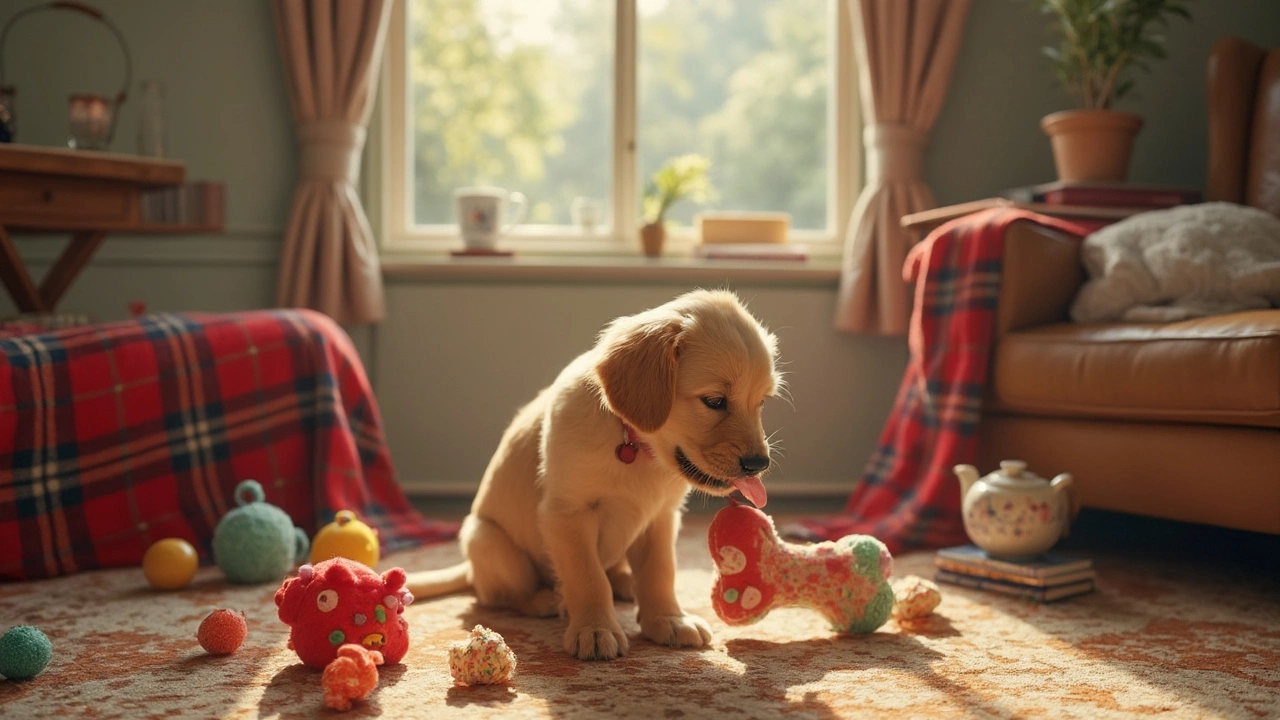Chew Toys for Dogs: How to Choose the Right One and Why They Matter
If you’ve ever come home to a shoe shredded by a happy pup, you know a good chew toy can save your wardrobe. Chew toys aren’t just a fun distraction – they’re a tool for dental health, stress relief, and training. Below we’ll break down what makes a chew toy great, which types work best for different dogs, and how to keep playtime safe.
What to Look for in a Safe Chew Toy
First thing – safety. A chew toy should be sturdy enough to stand up to your dog’s bite but not so hard that it damages teeth. Look for toys made from non‑toxic rubber, nylon, or natural fibers. Avoid any toy with small parts that could pop off and be swallowed.
Size matters, too. A toy that’s too small can be a choking hazard, while a toy that’s too big may be ignored. Measure your dog’s jaw width and aim for a toy that’s about the same length as their nose. For puppies, choose softer, pliable toys that ease teething. For adult chewers, opt for tougher rubber or reinforced nylon.
Types of Chew Toys and When to Use Them
Rubber toys like Kongs are classic. Fill them with peanut butter or kibble for extra mental stimulation. They’re great for heavy chewers who love a challenge.
Nylon bones are durable and often flavored. They’re a solid pick for dogs that gnaw aggressively but don’t need a toy that can be stuffed.
Rope toys double as a tug‑of‑war partner and a chew option. Keep an eye on fraying; when the strands start pulling apart, replace the toy to avoid ingestion.
Natural chews such as bully sticks, antlers, or deer antlers give a satisfying, long‑lasting chew. Choose products sourced from reputable suppliers and watch for any splintering.
For puppies, soft plush toys with squeakers can satisfy the urge to chew while being gentle on tender gums. Just supervise because some pups will tear the stuffing out.
Mixing toy types keeps your dog interested. Rotate the toys every few days so each one feels fresh and exciting.
Chew Toys as Training Helpers
Chew toys can reinforce good behavior. When your dog starts chewing furniture, redirect them to a designated chew toy and praise the switch. Over time, they learn what’s okay to chew.
Use a chew toy during crate training or when you’re busy. Giving a dog a safe chew to focus on reduces anxiety and prevents destructive habits.
Remember to keep a few spare toys handy, especially after a wash or a chew session. A broken toy can quickly become a health risk.
Maintenance Tips to Extend Toy Life
Rinse rubber toys with warm water and mild soap after each use. Nylon bones can be scrubbed with a toothbrush to remove buildup. Rope toys should be boiled for a few minutes weekly to kill germs.
Inspect toys daily. If a toy shows cracks, sharp edges, or excessive wear, toss it and replace it. It’s cheaper to buy a new toy than to pay for a vet visit.
By choosing the right chew toy, matching it to your dog’s size and chewing style, and keeping it clean, you’ll give your pup a safe outlet for natural urges and a happier, healthier mouth. Happy chewing!

Best Toys for New Puppies: What Actually Works
Figuring out which toys are best for a new puppy can feel overwhelming when shelves are packed with endless options. This article breaks down exactly what new puppy owners should look for, highlights how the right toy supports healthy chewing and learning, shares expert-backed tips, and explains what to avoid. Approachable and honest, it’ll help you set your puppy up for safe play and happy learning right from the start. Learn how to match toys to your puppy's needs and prevent common toy mistakes.
View more